
Image: Wikipedia.
For some mysterious reason, we get canning questions on our our seldom used Google voice number (213 537-2591). A good question came in this week. The caller asked, “I’ve got a home garden and produce trickles in. Can I freeze it and then can it later?” I called back and confirmed that the question related to pressure canning vegetables. Not knowing the answer to this question, I wrote an email to chef Ernie Miller, who I had the great privilege of having as an instructor for my Master Food Preserver certification class. Ernie responded,
The answer to the question is, in general, yes. In fact, certain types of produce lend themselves to this sort of preservation. Frozen berries, for example, are fantastic for jam making. If I need to make some peach jam out of season, I head straight to the frozen fruit section of the grocery store.
Your caller was asking about vegetables, of course, and there would be some nuances. First, they will want to be sure to freeze the vegetables properly, such as blanching certain veggies to set color and stop enzymatic reactions. Following the guidelines from the National Center for Home Food Preservation for freezing is a must. Obviously, some vegetables aren’t going to freeze well, such as celery, radishes, potatoes, etc.
No matter how good the freezing process, there are likely to be textural differences in the defrosted products. Most vegetables aren’t going to be as crisp coming out of freezing as they were going in. Those frozen carrots of yours won’t have the same “snap” as fresh carrots. Of course, the canning process is also going to have a tremendous textural effect as well, so the differences might not be noticeable. There are other options as well. For example, if you are canning carrots in water (which requires pressure canning), you could defrost the carrots, but add calcium chloride (pickle crisp) to firm them up a little in the can.
Probably the best thing for frozen vegetables used for canning would be to use them in “cooked” preparations, such as soups. Although celery is a terrible candidate for freezing because it is texturally destroyed, I don’t see why you couldn’t use previously frozen celery in a pressure canned soup. Frozen corn might be better off as a “creamed corn” in a can than just canned whole kernels.
There are a lot of variables, and it might require some experimentation. But again, “cooked” products will probably be the most successful.
I’ll repeat what Ernie says, when you have a food preservation question the best starting point is the National Center for Home Food Preservation. And if I had a large vegetable garden, (my small vegetable garden is a complete failure this summer) I’d invest in a pressure canner and, perhaps, a chest freezer.
For more information on pressure canning have a listen to our interview with Ernie on episode 14 of our podcast. And check out Ernie’s Facebook page Rancho La Merced Provisions to find out about classes he’s teaching.
Support Root Simple
The All New Ball Book Of Canning And Preserving: Over 350 of the Best Canned, Jammed, Pickled, and Preserved Recipes. From the experts at Jarden Home Brands, makers of Ball canning products, comes the first truly comprehensive canning guide created for today’s home cooks. This modern handbook boasts more than 350 of the best recipes ranging from jams and jellies to jerkies, pickles, salsas, and more-including extender recipes to create brand new dishes using your freshly preserved farmer’s market finds or vegetable garden bounty.

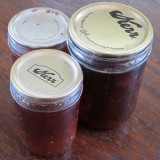
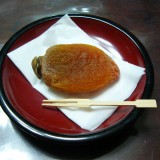
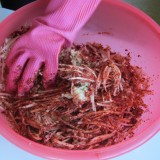
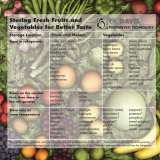
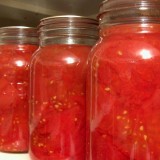
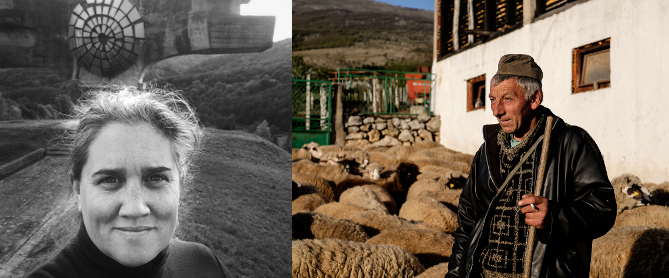
I tend to dehydrate fresh veggies from the garden and store them dry for future soups and stews that I then pressure can later in the year. Works just fine for me.
Agreed. Dehydration is a great way to preserve fruits and veggies.
Something to keep in mind is that 1970s (and before) books on food preservation (especially canning) may include advice that is not safe. So, if you pick up older food preservation books at yard sales, thrift stores, etc., always check the advice against the resources recommended in the Root Simple blog post.
Yep. Always go to the National Center for Home Food Preservation. They have, pretty much, covered every food preservation issue.
If you have an efficient chest freezer, why go to the trouble of re-thawing?
Agreed. Freezing is a great way to preserve vegetables assuming your electricity is reliable.
Before I got an Excalibur dehydrator, I regularly froze celery. I only used it for flavor in any cooked food. Celery gets soft when cooked, anyway. Neither frozen or dehydrated certainly will not do for tuna or potato salad.
I chopped the celery before I froze or dehydrated it.
We saved our pennies for a looooong time and bought a freeze-dryer now that they’re available in a size (and price range) more appropriate for an individual home. Best food preservation purchase ever. Some things still get canned: jellies and jams, soup stock, tomato sauce, but other things are freeze dried, particularly those low-acid vegetables that need pressure canning. Too much textural change for us. The FD works especially well for animal products like the glut of eggs we get in the summer, sour cream, cheese, meat that I’d rather not keep in the freezer because of the dodgy reliability of our power, etc. We live on a mountain a good drive from any store so it’s just not convenient (and in winter, not always possible) to dash out to the grocer’s for something. It makes a good deal of sense for us to have lots of supplies on hand.
Oh, I sympathize with you on your vegetable garden. Not feeling at all cocky myself this year. Yellowing leaves and it’s only still June!
Soldier on.
I always use National Center for Home Food Preservation as a resource whenever I have a question on canning. They are very helpful.